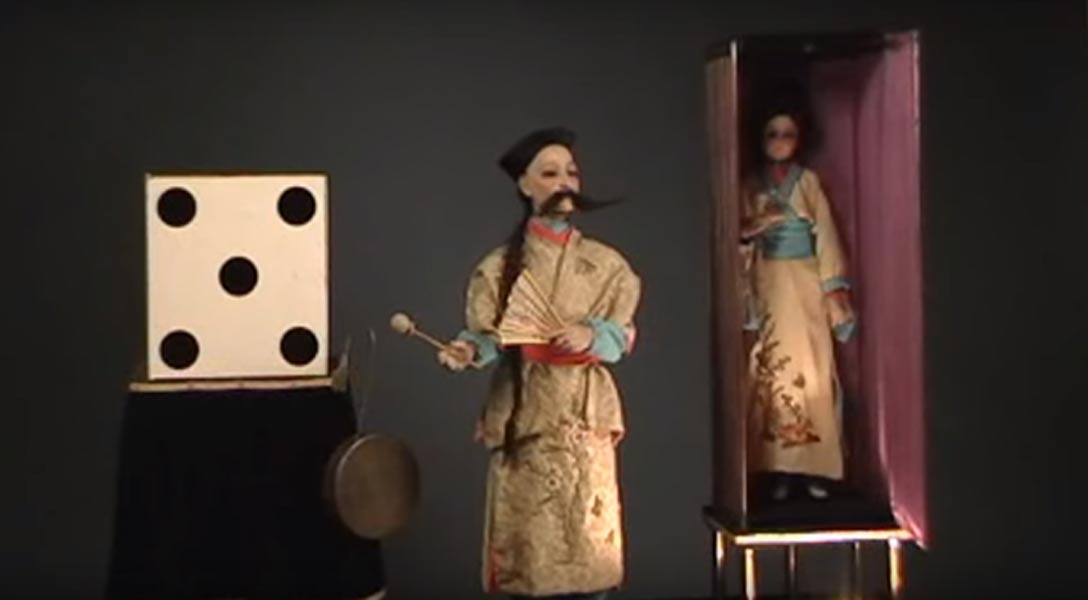Advanced Technology of the Ancient Chinese Automata
The word automaton is said to be the Latinized form of the Greek word, automatos, meaning ‘thinking’, ‘animated’ or ‘willing’. Thus, this word has been used to describe moving machines, especially those that look like humans or animals. Stories of automata have existed in the many world mythologies, for instance, the golems of Jewish legend and the mechanical servants of Hephaestus. Additionally, many ancient civilizations are recorded to have had scientists who succeeded in creating such machines. Among the most impressive, are those created by the Chinese.
The Liezi
The one example of an automaton that was created by the ancient Chinese can be found in the Liezi, a Taoist text traditionally attributed to a philosopher by the name of Lie Yukou. The Liezi has been described as a Chinese philosophical text that follows the line of thought of two other more renowned Taoist texts, the Laozi and the Zhuanzi. In later times, the status of this text was elevated to that of a classic, and was classified as Daojia (meaning ‘the School of the Way’), or Taoist philosophy.

"Liezi in a landscape," 1814 Chinese painting Su Renshan. (Public Domain)
Whilst the Liezi is a fascinating text in itself, there is a particular passage in this philosophical piece of work that is of most interest with regards to the topic of this article. This passage can be found in Book V, which is entitled ‘The Questions of Pang’, of Lionel Giles’ 1912 translation.
- Jean Eugene Robert-Houdin, The Father of Modern Magic Who Stopped a Revolt with His Abilities
- Chinese Votive Sword Found in Georgia suggests Pre-Columbian Chinese travel to North America
King Mu of Zhou
The principal character of this text is King Mu of Zhou, the fifth king of the Zhou Dynasty, who is said to have reigned during the 10 th century BC. In the story, the king was on a tour of inspection in the west. The king is said to have crossed the Kunlun Mountains, though he decided to head back to the east before reaching the Yen Mountains. It was during his return journey that an artificer by the name of Yen Shih was presented to King Mu.

King Zhao of Zhou. (Public Domain)
Automaton Show
During his audience with the king, Yen Shih informed the king that he had an invention which he would like to show him, and would bring it on the following day. When the next day arrived, Yen Shih came before King Mu again. This time, however, he had another man accompanying him. When asked who he was, Yen Shih replied that he had the handiwork he had promised to show the king. He added that this automaton could sing and act, which left the king astonished. A demonstration was then conducted, which is described as such,
“It walked with rapid strides, moving its head up and down, so that anyone would have taken it for a live human being. The artificer touched its chin, and it began singing, perfectly in tune. He touched its hand, and it started posturing, keeping perfect time. It went through any number of movements that fancy might happen to dictate. The King, looking on with his favorite concubine and the other inmates of his harem, could hardly persuade himself that it was not real.”
Towards the end of the demonstration, the automaton “winked his eye and made sundry advances to the ladies in attendance on the King”, which apparently angered King Mu. Fearing for his life, Yen Shih pulled the automaton apart to show that it was a machine, and not a real person, “And lo! It turned out to be merely a conglomeration of leather, wood, glue and paint, variously colored white, black, red and blue”. Examining the automaton, King Mu observed that its internal organs were complete, and had muscles, bones, skin, teeth and hair. Yet, all of these were artificial.
The automaton was then re-assembled, and regained its original look. King Mu then experimented by removing different organs to see what effects it would have on the machine, “The King tried the effect of taking away the heart, and found that the mouth would no longer utter a sound; he took away the liver, and the eyes could no longer see; he took away the kidneys, and the legs lost their power of locomotion.”
- Unfolding the Golden Nuggets of Early Chinese Paper Folding and the Art of Origami
- Celadon: Appreciating Pottery for its Aesthetic Value and Magical Qualities
The king was delighted with Yen Shih, and decided to take him and his creation back to his capital. The story ends by presenting two other inventors, Pan Shu and Mo Ti. The former is said to have invented a ‘cloud-ladder’ that could reach to the heavens, whilst the latter is recorded to have created a wooden kite that could fly for three days without coming down. When they saw Yen Shih’s automaton, however, the two inventors were humbled, and never again boasted about their mechanical skills.
Top image: YouTube Screenshot of a Chinese Automata . Photo source: YouTube.
By Wu Mingren
References
Combing, B., 2014. Ancient Chinese Automata. [Online]
Available at: http://www.strangehistory.net/2014/08/14/ancient-chinese-automata/
Coutinho, S., 2016. Liezi (Lieh-tzu, cn. 4th cn. B.C.E.). [Online]
Available at: http://www.iep.utm.edu/liezi/
Dalakov, G., 2016. Early Automata. [Online]
Available at: http://history-computer.com/Dreamers/EarlyAutomata.html
Harper, D., 2016. automaton (n.). [Online]
Available at: http://www.etymonline.com/index.php?term=automaton
historymesh.com, 2016. Chinese Android (1000BC). [Online]
Available at: http://historymesh.com/object/chinese-android/?story=automatons
Lie Yukou, Liezi [Online]
[Giles, L., (trans.), 1912. Lie Yukou’s Liezi.]
Available at: http://www.sacred-texts.com/tao/tt/
www.mechanical-toys.com, 2016. Automata. [Online]
Available at: http://www.mechanical-toys.com/History%20page.htm



















